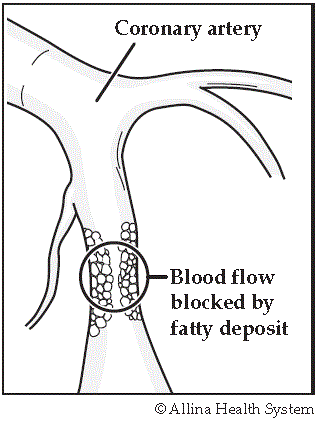
Heart disease

Coronary artery disease occurs when blood flow is blocked by fatty deposits inside an artery.
Heart disease
Fatty deposits can form and harden in the arteries of your heart. This material, or plaque, narrows the arteries in a process called atherosclerosis which can restrict blood flow to your heart. The more plaque in your arteries, the greater your risk for a heart attack or heart symptoms.
There are two types of plaque:
- non-obstructive: Plaque that cracks can cause a clot to form within a coronary artery. The clot can stop blood flow to your heart, leading to heart attack or heart damage. This form of plaque is the most likely to cause a heart attack.
- obstructive: Plaque can continue to build up slowly over time, reducing blood flow to your heart. When this happens, you may feel chest pains when you are physically active. Obstructive plaque does not always cause chest pain.
There are several problems that could develop with your heart. The following are some common heart problems.
How to prevent heart disease:
- do not use tobacco
- maintain a healthful weight
- exercise regularly
- eat a healthy, well-balanced diet low in sodium and fat
- monitor your blood pressure
- manage your stress.
Source: Allina Health's Patient Education Department, Take it to Heart, Your Healthy Heart Guide, cvs-ah-92674
Reviewed By:
Allina Health's Patient Education Department experts
First Published: 10/04/2002
Last Reviewed: 01/19/2019